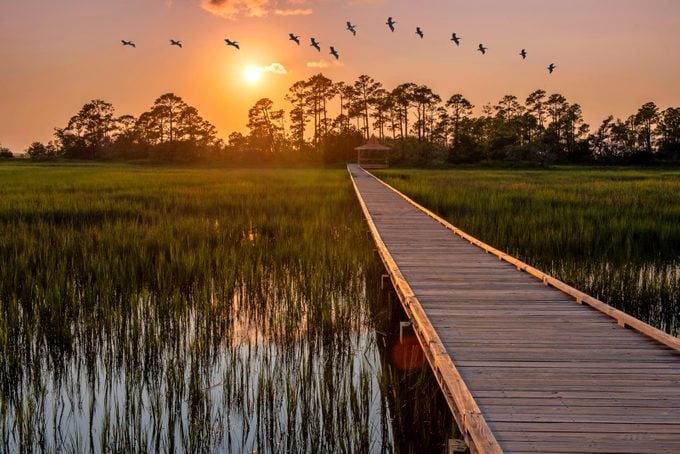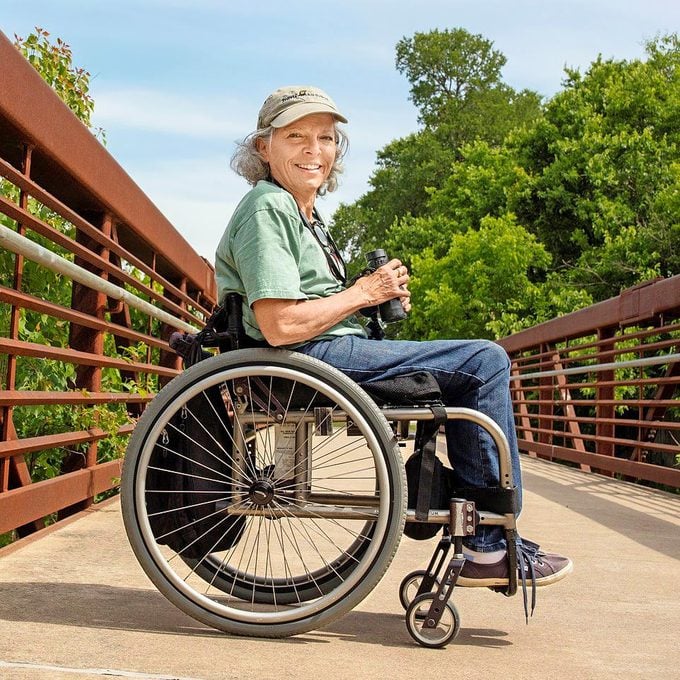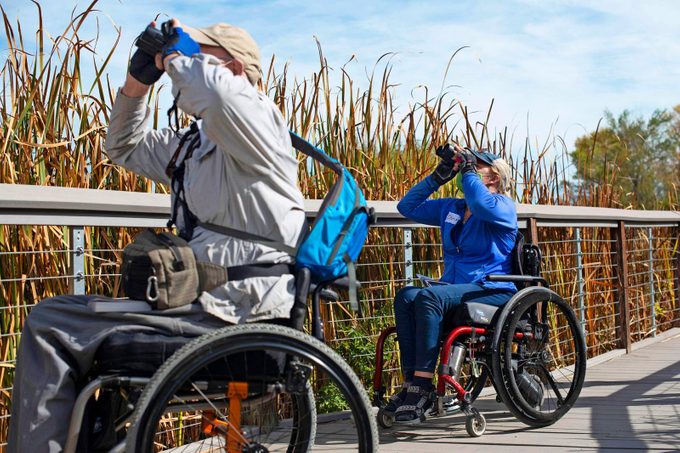Birdability Blazes a Welcoming Trail for All Birders
Updated: Nov. 02, 2023
Birding is for every body! Learn about Birdability, a birding organization improving accessibility to get more people into nature.
Why Birdability Matters

Birding with Virginia Rose is an opportunity to gain a new perspective on both birds and people. A group of birders experienced this shift in mindset firsthand as Virginia led an outing at the New Jersey Audubon’s Cape May Spring Festival in 2021 on the old paved paths at Cox Hall Creek, a golf course turned wildlife management area.
Discover how The Wisco Birder is spreading the message that birding is for everyone.
Empowerment and Joy

Virginia uses a manual wheelchair to find birds by sight and sound. She travels down paved and hard-packed dirt trails, her preferred surfaces for expeditions. She favors see-through railings for a clear view, and appreciates birders who set their spotting scopes atop tripods at wheelchair height.
“Birding includes difficulty and uncertainty,” says Virginia, who has been in a wheelchair since age 14 after a horseback riding accident. “But it provides in return empowerment and joy.”
Through the organization Birdability, the retired teacher’s mission is to make birding inclusive, safe, welcoming and accessible for “everybody and every body,” as Birdability’s website (birdability.org) states. That includes people with mobility challenges, blindness, low vision, chronic or mental illness, and intellectual or developmental disabilities, as well as those who are neurodivergent, deaf or hard of hearing.
According to the Centers for Disease Control and Prevention, one in four adults live with some form of disability.
Find out why birding will boost your mental health.
A Reason to Be Outside
Though Virginia comes from a family of birders, she first picked up binoculars in her early 40s at the suggestion of her sister, an avid bird-watcher. “Birding gave me a reason to be outside again,” Virginia says. “I became stronger physically and emotionally. I like to say I met my best self out there.”
Virginia joined her local Audubon Society chapter in Travis County, Texas, took birding classes and attended outings after calling leaders the night before to discuss terrain challenges. She began leading monthly outings for amputees, stroke survivors and those with spinal cord injuries, identifying local trails that were entirely or partly accessible to mobility-challenged people.
Not sure how to get started birding? Check out our easy-to-understand bird-watching guide for beginners.
She called her effort Birdability. At the 2018 National Audubon Society convention, she suggested using a list of criteria, such as van parking and trail surfaces, to rate the accessibility of parks nationwide. Map designers in the audience approached her to incorporate the idea into an interactive, crowdsourced resource. This resulted in the Birdability Map.
Living in the city doesn’t mean you can’t go birding! Learn how to be an urban birder.
Charting New Territory

The Birdability Map helps anyone find birding locations that meet specific accessibility needs. It also allows birders to rate the accessibility of a local trail or park by completing a checklist. The checklist incorporates criteria such as the presence of curb cuts to get on to a trail, or steps and barriers that hinder access. The map takes many factors into account that could make a birding location more people-friendly. These include trail surface, width and gradient, noise concerns, and the availability of accessible restrooms or benches.
“Something as simple as adding a bench with a backrest and armrests, and connected to the trail by the same surface, immediately improves access to that location for folks with difficulty walking or fatigue issues,” says Freya McGregor, former director of programs and outreach for Birdability.
Here’s how to plan an exciting big day of birding.
A Thousand Sites
Today, the map is an ongoing collaboration between Birdability and the National Audubon Society. It has accessibility scores for more than a thousand sites. The map covers nature centers, wildlife refuges and botanical gardens, as well as national, state, city and county parks. Freya encourages people who manage birding spots to use the checklist to improve accessibility, and birding leaders at clubs or Audubon chapters to hold outings for those with accessibility challenges. But she adds that you don’t have to be a disability expert to lead such an outing.
Check out 20 mental and physical health benefits of gardening.
“It’s more important to be intentional about what you say and how you say it,” she says. “Set the tone by being friendly, encouraging and excited, and invite participants to share their names, pronouns and accessibility challenges. Lead with kindness and a willingness to learn from the people you’re trying to serve, and you’ll be most of the way there.”
To organize inclusive walks in your community, Birdability founder Virginia Rose suggests reaching out to the following groups:
- Adaptive sports groups
- Adult care facilities
- Camps for children with disabilities
- Centers for independent living
- Disability support groups
- Easterseals
- Rehabilitation hospitals
- Schools for the deaf and blind
- Veterans Affairs hospitals
- The Wounded Warrior Project
Next, check out Backyard Citizen Science Projects for nature lovers to join.




















